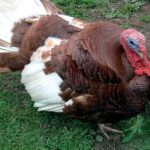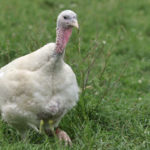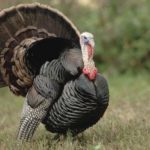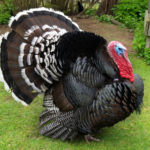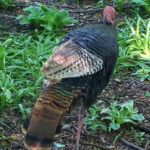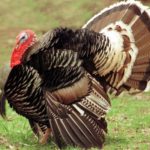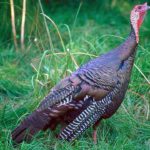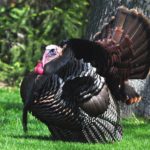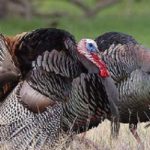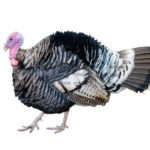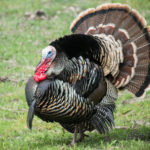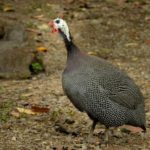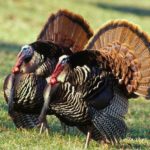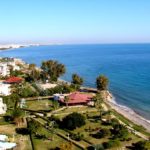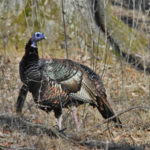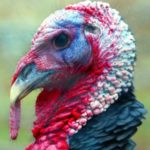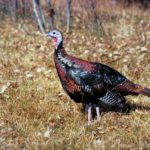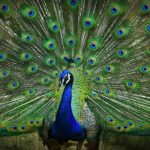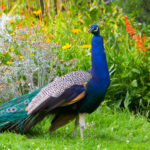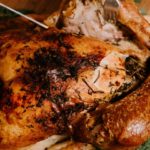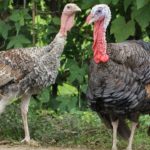Facts about turkeys
 Turkey is a kind of pheasant. The origin of the name is unknown, but there are interesting theories. Christopher Columbus thought that the New World was connected with India. He called the unusual bird “tuka”, which means “peacock” in the language of India. Another story tells that traders who sold a turkey to Spain replaced the Indian word “tuka” with the Jewish “tukki”, which entered the English language as “turkey” – a turkey. Others believe that the American-Indian name for this bird was “firkee”. Another theory says that the existing name “turkey” came from the cry of this bird, which sounds like something like “turc, turc, turc.”
Turkey is a kind of pheasant. The origin of the name is unknown, but there are interesting theories. Christopher Columbus thought that the New World was connected with India. He called the unusual bird “tuka”, which means “peacock” in the language of India. Another story tells that traders who sold a turkey to Spain replaced the Indian word “tuka” with the Jewish “tukki”, which entered the English language as “turkey” – a turkey. Others believe that the American-Indian name for this bird was “firkee”. Another theory says that the existing name “turkey” came from the cry of this bird, which sounds like something like “turc, turc, turc.”
- Christopher Columbus and later Cortez liked turkey, which they tried in the Western Hemisphere and both brought some of these birds to Europe. By 1530 turkeys had already been grown in Italy, France and England. When the Pilgrims and other early settlers arrived on the American coast, they were already familiar with turkey meat.
- Biologists say that turkeys have inhabited the territory of America for 10 million years.
- Who was the first domesticated turkey? There is archaeological evidence that the turkeys were caught by the South-West Indians 2,000 years ago. Some scholars believe that the Aztecs were the first to domesticate turkeys.
- History connects the turkey with the first banquet on the occasion of Thanksgiving, celebrated by the Pilgrims in 1621. However, some believe that the Virginia settlers celebrated the first Thanksgiving Day earlier when they celebrated the English Harvest Festival, a kind of homecoming on the weekend.
- Ben Franklin suggested that the national bird become a turkey, and not a bald eagle.
- The turkey feathers are painted and used in the creation of Indian costumes. It is estimated that turkeys have approximately 3,500 feathers in maturity. At least one company in the State of Texas uses the skin as a skin for manufacturing a custom-made boot for cowboys. Turkey’s feathers are used to make pillows.
- President Abraham Lincoln declared Thanksgiving as a national holiday in 1863
- A domesticated turkey can not fly. Wild turkey can fly at short distances with a speed of up to 88.51 km / h and can run at speeds up to 40.23 km / h.
- Only turkey males can mumble.
- The son of Abraham Lincoln, Ted, had a turkey pet. When it was decided that the bird would be a wonderful festive dinner, the boy made such a scandal that the president made “presidential forgiveness” for Ted’s pet.
- The first dinner on the moon of Neil Armstrong was a lunch of baked turkey in a bag.
- Turkeys do not have ears, and despite this they have excellent hearing. They have no sense of smell, but they taste great.
- The homeland of the indies is North and Central America, and there is evidence that they appeared there another 10 million years ago.
- Turkey’s egg is twice as large as chicken. The shell of his pale cream color with brown spots.
- The largest baked turkey weighed 39.09 kg, and it was cooked on December 12, 1989.
- 269 million turkeys are grown in the US specifically for Thanksgiving Day – this is almost one for every resident of the country.
- The turkey can drown if it raises its head upwards when it rains.
- In the meat of a turkey, like in another bird, there is less cholesterol than in beef and many kinds of other meat.
